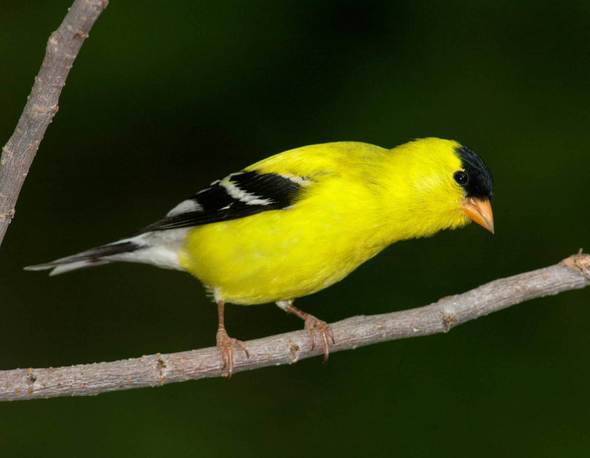|
Volunteers needed to help with 2017
North American Breeding Bird Survey May 27 – July 7.
JEFFERSON
CITY, Mo. — Calling all birders and
other bird-lovers in Missouri! The Missouri Department of Conservation (MDC) needs
volunteers to assist with the 2017 North American Breeding Bird Survey (BBS)
May 27 – July 7. The BBS is a long-term, large-scale, international bird
monitoring program that started in 1966. The purpose of the BBS is to track the
status and trends of North American bird populations.
There
are six route areas in Missouri that need volunteers: Barnard, Doe Run, Hayti,
House Springs, Lucerne, and Rueter.
For
more information or to volunteer, contact MDC Resource Scientist Janet Haslerig
by email at Janet.Haslerig@mdc.mo.gov or call
573-522-4115, ext. 3198.
"Bird populations are subjected to
numerous, widespread threats including habitat loss, habitat fragmentation,
land-use changes, and chemical contaminants," said Haslerig. "If significant
declines are detected through BBS data, their causes can then be identified and
appropriate actions taken to reverse them before populations reach critically
low levels."
Each year during mostly June -- the
height of the bird-breeding season for most of the U.S. – BBS volunteers
collect bird-population data along roadside survey routes. Each survey route is
24.5 miles long with stops at half-mile intervals. At each stop, volunteers
conduct three-minute point counts where they record data on the bird species
and numbers they see or hear within a quarter-mile radius. Surveys must start
one-half hour before sunrise and take about five hours to complete. Volunteers
need only conduct their survey route once during the May 27 – July 7 survey
period.
Haslerig said volunteers need access to
suitable transportation, good hearing and eyesight, and must be able to
identify all birds in the area. All new BBS volunteers must successfully
complete an on-line training program before their data can be used.
She also stressed that knowing bird
songs is extremely important. "Most birds counted on these surveys are
singing males," said Haslerig.
Haslerig hopes surveyors will commit to
multiple years of collecting data on the same route. "It helps with the
consistency in data collection," she said. "And volunteers also get
familiar with the routes and have better ideas what birds they will encounter.
And it’s fun!”
For
more information on birds of Missouri, visit the MDC online Field Guide
at nature.mdc.mo.gov/discover-nature/field-guide/search.
 In
breeding plumage, the male American goldfinch is bright yellow with black wings,
tail, and forehead, along with two white wing bars and tail spots. It is one
species volunteers may see and hear during the annual North American Breeding
Bird Survey.
|